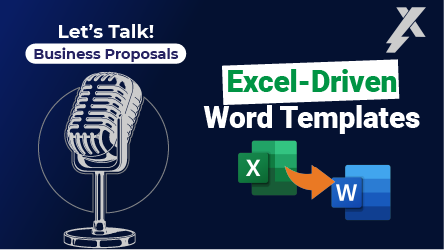In today’s competitive landscape, responding to Requests for Proposals (RFPs) efficiently is crucial for sales teams striving to secure profitable contracts and grow their client portfolio. By integrating advanced tools like Microsoft Copilot AI with Expedience Software, sales teams can streamline the RFP response process, resulting in enhanced close rates, expanded opportunities, and increased revenue per sale. Here’s how sales teams can leverage Microsoft Copilot effectively throughout their RFP response journey:
1. Summarize the RFP
The first step in responding to an RFP is to thoroughly understand its requirements and objectives. This involves summarizing key details such as scope, deliverables, timeline, evaluation criteria, and any specific instructions provided by the client.
2. Gather Opportunity Information
Once the RFP is understood, sales teams gather pertinent information about the opportunity. This includes analyzing the client’s industry, their pain points, existing solutions, and any competitive landscape insights that could influence the proposal strategy.
3. Use Microsoft Copilot AI to Research Responses
Microsoft Copilot plays a crucial role in researching and drafting responses tailored to the RFP. Using natural language processing (NLP) and machine learning algorithms, Microsoft Copilot swiftly analyzes the RFP requirements and generates relevant content. This not only saves time but also ensures accuracy and compliance with client expectations.
4. Meet with Team to Review
Collaboration is key in crafting a compelling RFP response. Sales teams convene to review Microsoft Copilot AI-generated content, discuss strategy, and refine the proposal’s messaging to align with the client’s needs and preferences. This collaborative approach ensures that the proposal reflects a unified and comprehensive understanding of the client’s requirements.
5. Revise Responses
After the initial review, teams iteratively refine and enhance the proposal. They incorporate feedback, address any gaps, and ensure that the response is cohesive, persuasive, and competitive. Microsoft Copilot’s ability to facilitate real-time editing and version control streamlines this process, ensuring that the final proposal is polished and impactful.
6. Create an Email with Response
Once the RFP response is finalized, it’s crucial to deliver it effectively. Sales teams use Microsoft Copilot to draft a personalized email that accompanies the proposal submission. This email highlights key points, emphasizes the value proposition, and invites further discussion, reinforcing a client-centric approach and fostering engagement.
Microsoft Copilot is the undisputed AI leader in the creation of sales proposals and other business-critical content. By integrating Artificial Intelligence into the Expedience RFP response workflow, sales teams unlock several strategic advantages:
- Improved Close Rate: Enhanced content quality and relevance increase the likelihood of winning bids, translating into a higher close rate.
- Increased Number of Opportunities: Streamlined processes enable sales teams to respond to more RFPs efficiently, thereby expanding their pipeline of potential opportunities.
- Increased Revenue per Sale: Tailored responses that resonate with client needs and preferences lead to larger and more profitable contracts, driving up revenue per sale.
In conclusion, adopting Microsoft Copilot AI for RFP responses empowers sales teams to operate more efficiently, differentiate their offerings, and ultimately achieve greater success in securing and expanding client partnerships. By leveraging advanced AI capabilities, organizations can elevate their competitive edge and capitalize on growth opportunities in today’s dynamic business landscape.
Contact us today to learn more about how Expedience and Microsoft Copilot AI can improve your proposal process!






